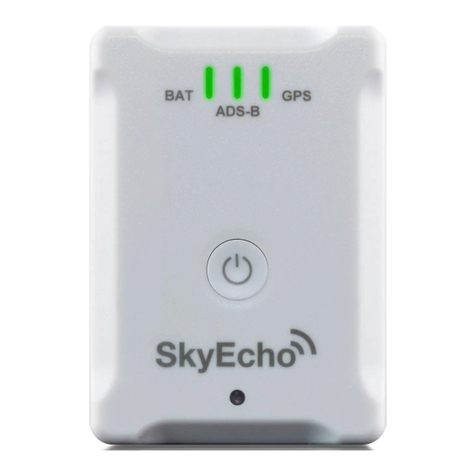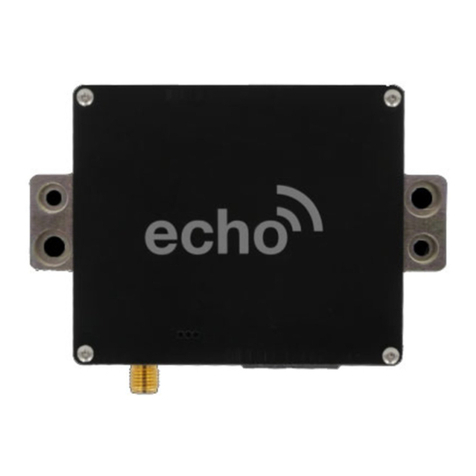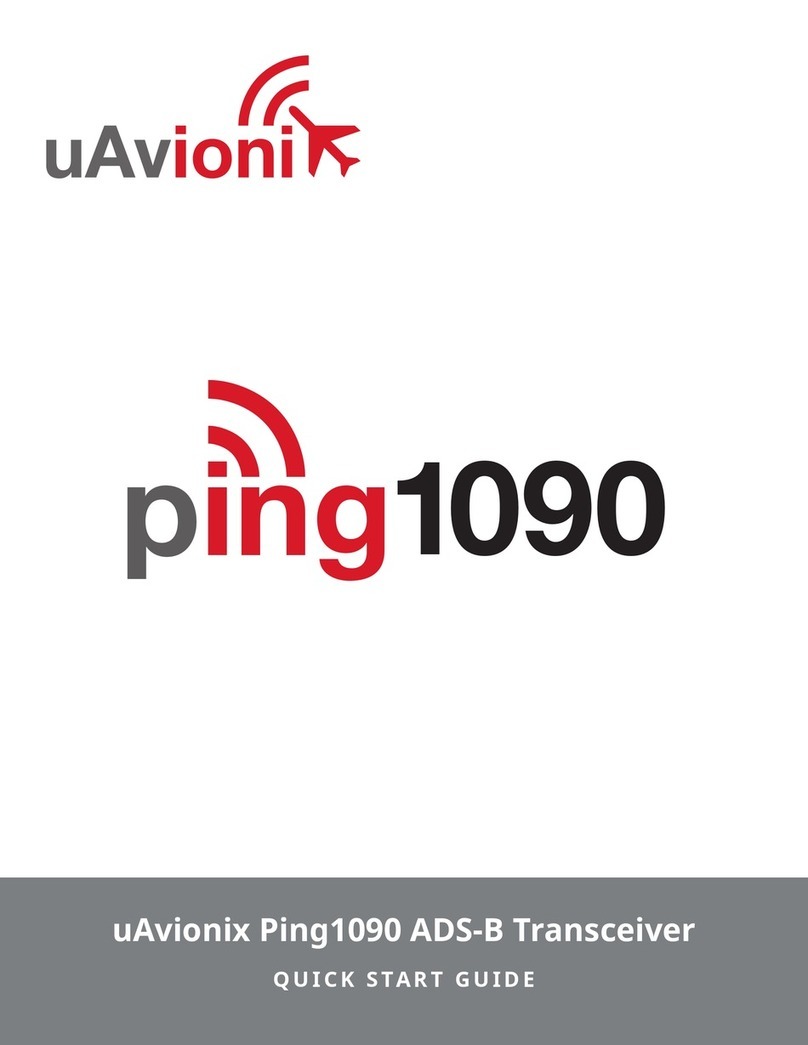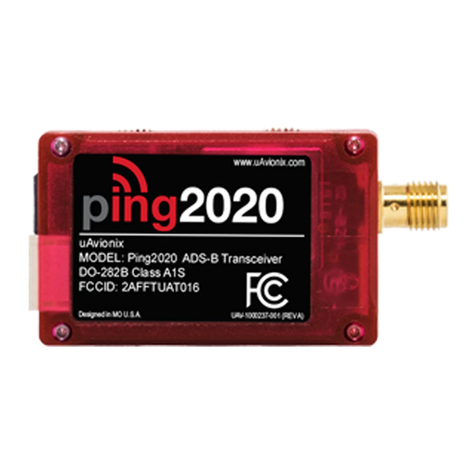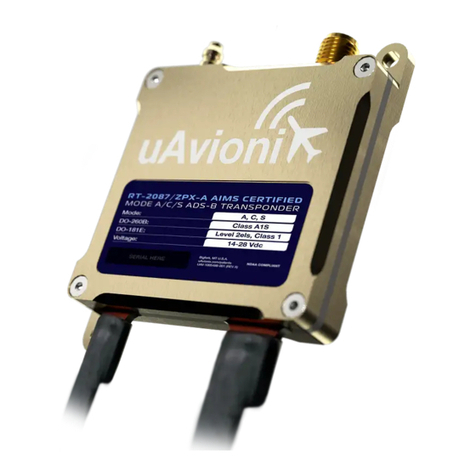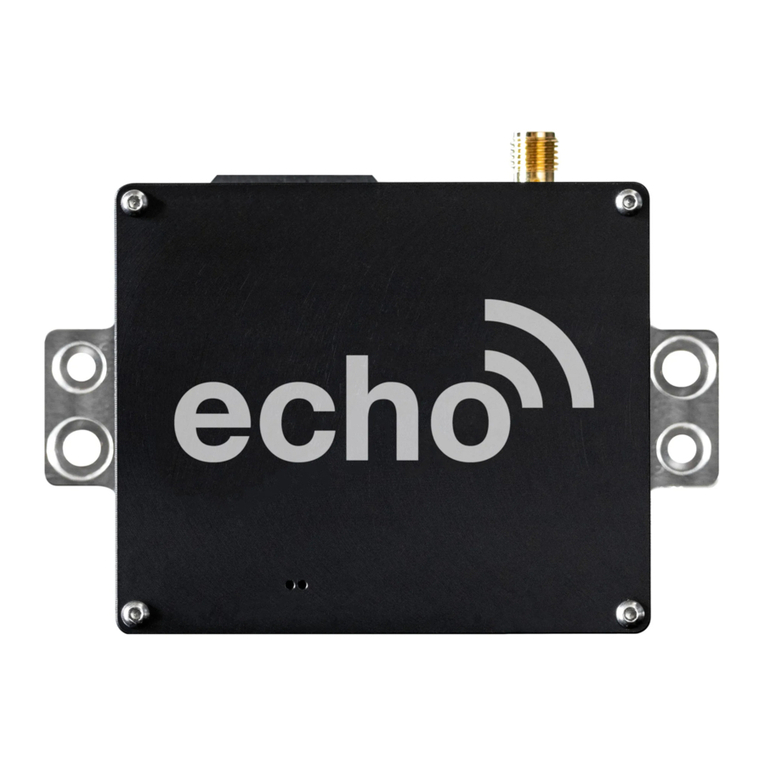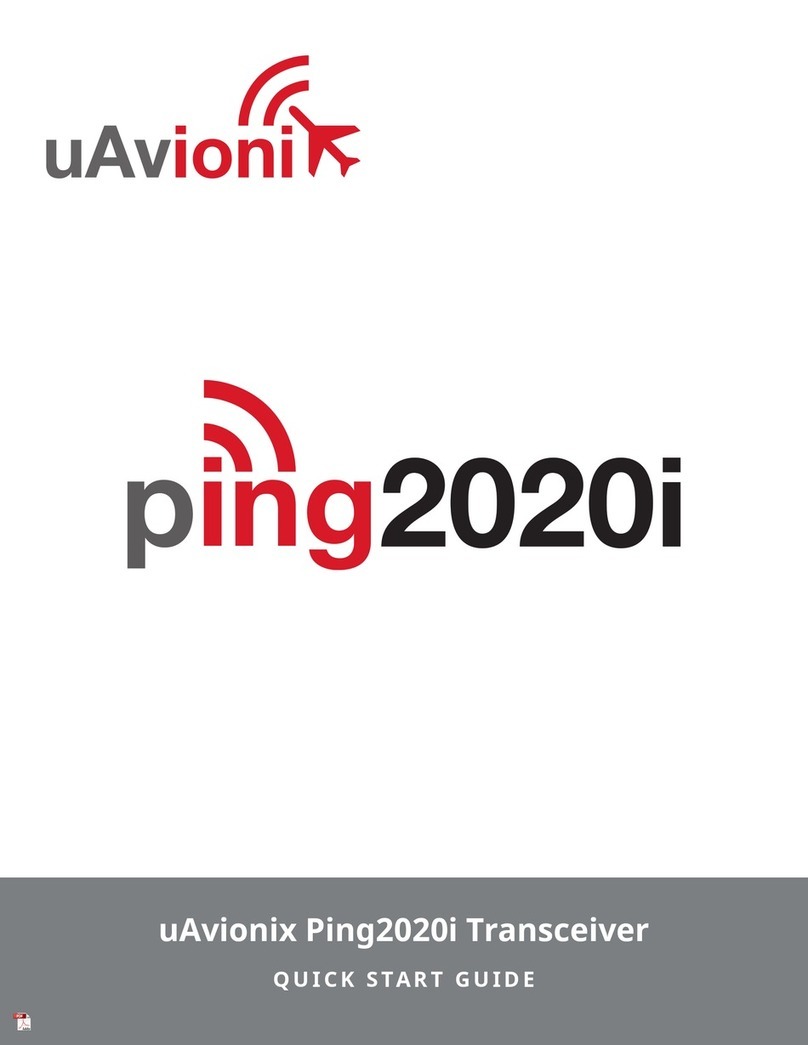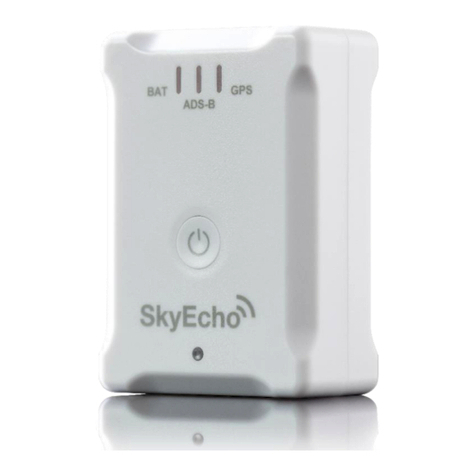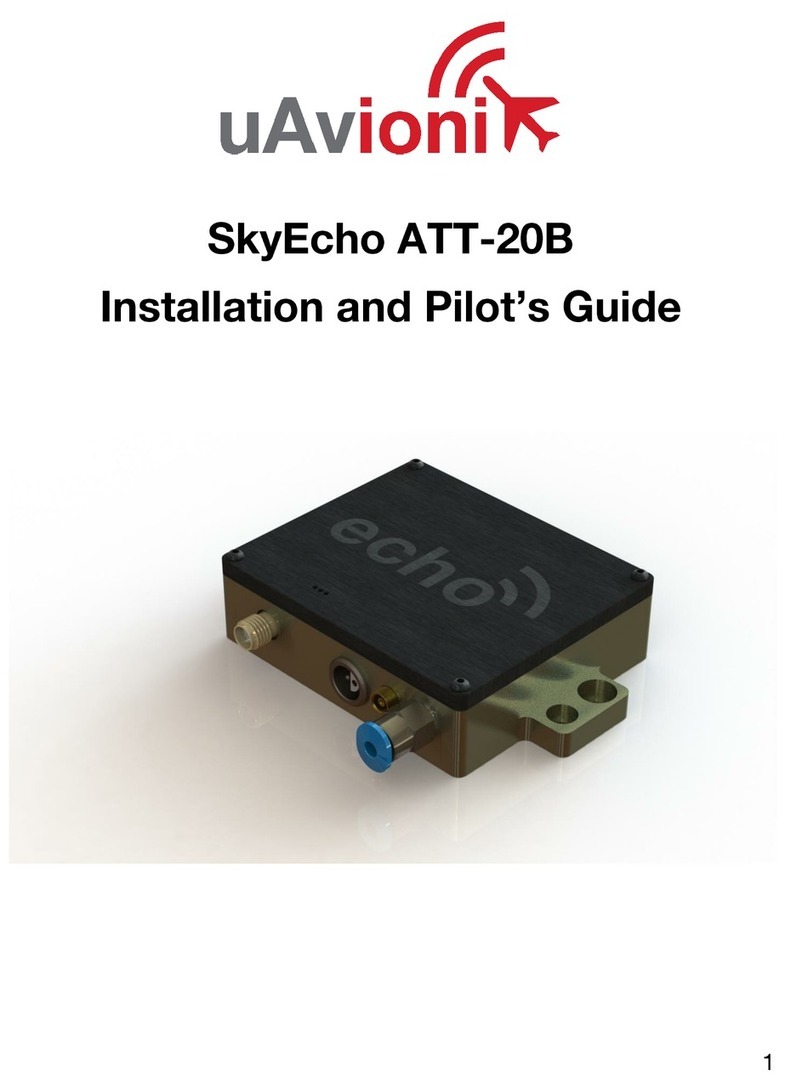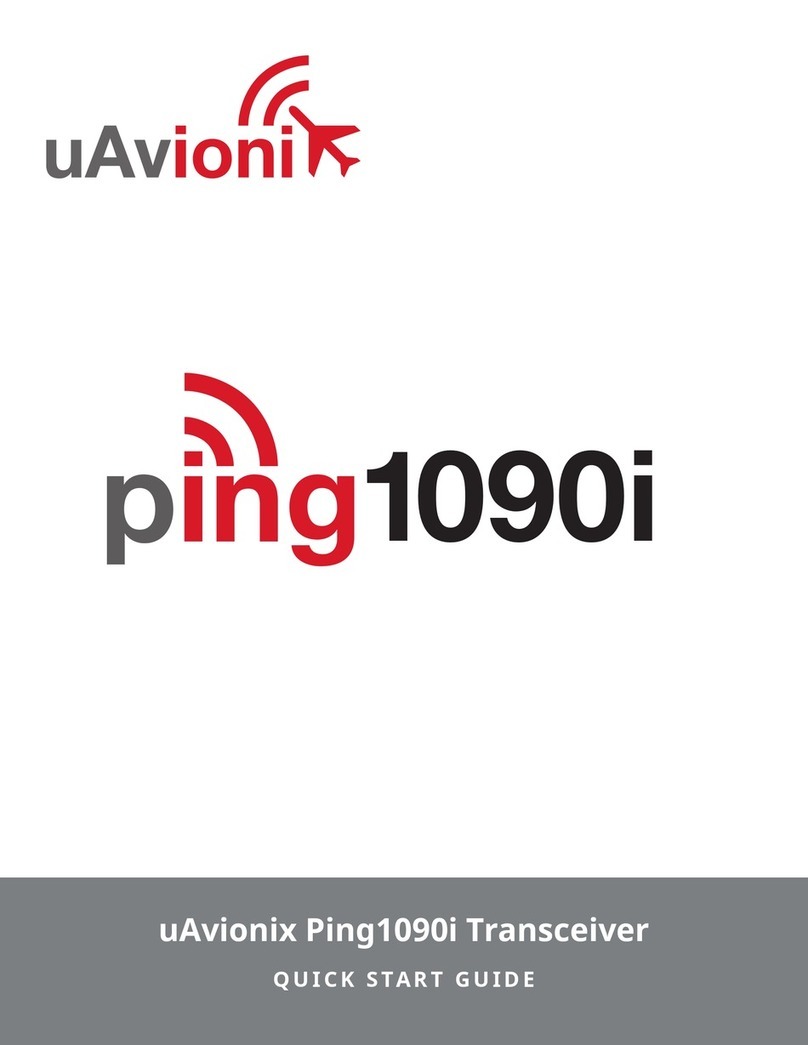UAV-1000711-001
ECCN 7A994 Page 4 | 24
2 Warnings / Disclaimers
All device operational procedures must be learned on the ground.
uAvionix is not liable for damages arising from the use or misuse of this
product.
These items are controlled by the U.S. Government and authorized for
export only to the country of ultimate destination for use by the ultimate
consignee or end-user(s) herein identified. They may not be resold,
transferred, or otherwise disposed of, to any other country or to any person
other than the authorized ultimate consignee or end-user(s), either in their
original form or after being incorporated into other items, without first
obtaining approval from the U.S. government or as otherwise authorized by
U.S. law and regulations.
3 Limited Warranty
uAvionix products are warranted to be free from defects in material and
workmanship for one year from the installation in the aircraft. For the
duration of the warranty period, uAvionix, at its sole option, will repair or
replace any product which fails under normal use. Such repairs or
replacement will be made at no charge to the customer for parts or labor,
provided that the customer shall be responsible for any transportation cost.
This warranty does not apply to cosmetic damage, consumable parts,
damage caused by accident, abuse, misuse, water, fire or flood, damage
caused by unauthorized servicing, or product that has been modified or
altered.
IN NO EVENT, SHALL UAVIONIX BE LIABLE FOR ANY INCIDENTAL,
SPECIAL, INDIRECT OR CONSEQUENTIAL DAMAGES, WHETHER
RESULTING FROM THE USE, MISUSE OR INABILITY TO USE THE
PRODUCT OR FROM DEFECTS IN THE PRODUCT. SOME STATES DO
NOT ALLOW THE EXCLUSION OF INCIDENTAL OR CONSEQUENTIAL
DAMAGES, SO THE ABOVE LIMITATIONS MAY NOT APPLY TO YOU.
